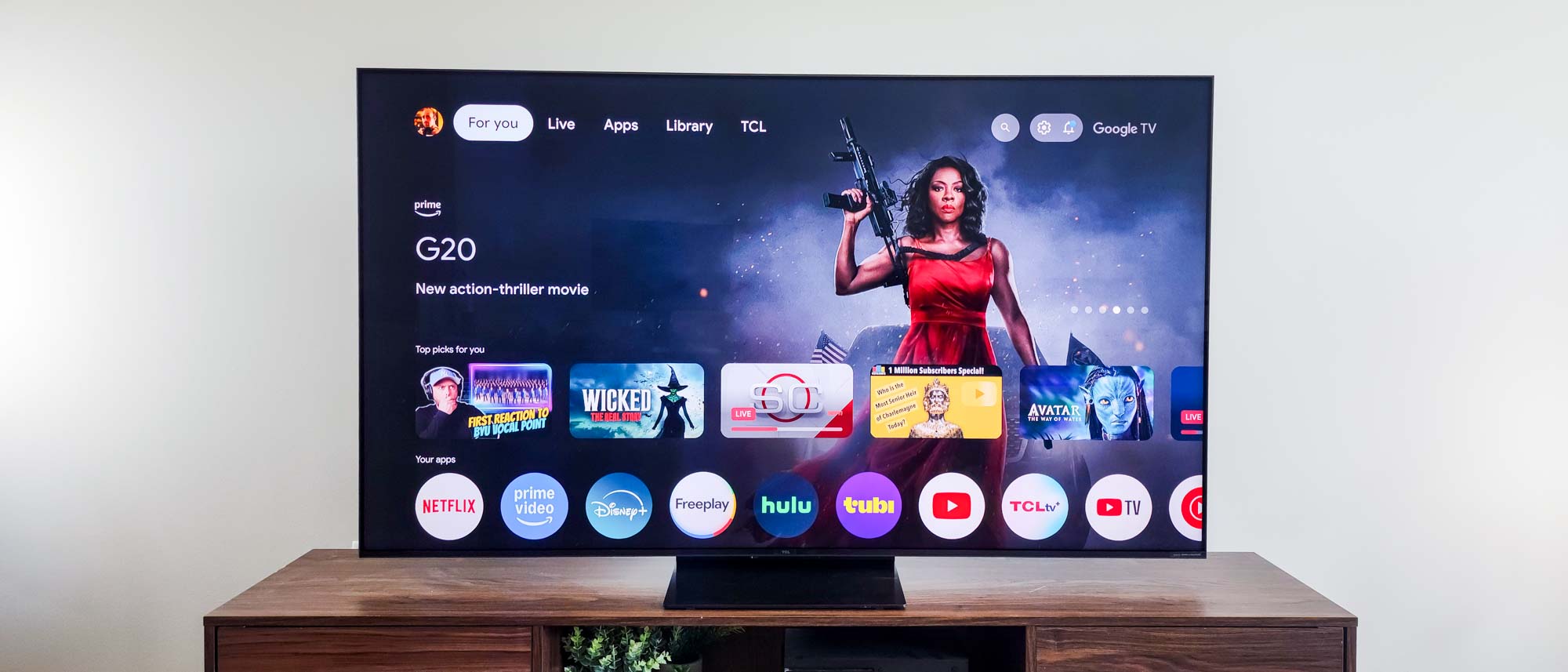Tom's Guide Verdict
The TCL QM7K is a full step up from bargain-priced sets, with good picture quality and a generally satisfying feature collection. It makes a few small missteps, but its low sale price makes up for most of them.
Pros
- +
Good color in SDR and HDR
- +
Impressive HDR brightness
- +
Excellent Google TV operating system
- +
High VRR capabilities
Cons
- -
Off-angle and bright-room viewing issues
- -
Only two HDMI 2.1 ports
- -
Poor audio
Why you can trust Tom's Guide
Price: $1,499.99
Screen size: 65 inches
Model: TCL 65QM7K
Resolution: 3,840x2,160
HDR: Dolby Vision, HDR10, HDR10+, HLG
Refresh rate: 144Hz native, 288Hz VRR
Ports: 2 HDMI 2.1, 2 HDMI 2.0, 2 USB
Audio: 40W
Smart TV software: Google TV
Size (without stand): 56.8x32.7x2.2 inches
Weight (without stand): 39.6 pounds
A few years ago, I wouldn’t have thought that the less expensive sector of the TV market would have had much to offer those who wanted good TVs, but how quickly things can change. The combination of Mini LEDs and quantum dots has transformed picture quality for sets at any price, leaving me eating up my words.
The latest example to follow the trend is the new TCL QM7K: You may not get everything you would with a pricier set, but you’ll get by quite well, and with a picture you can feel good about. Brightness, color, and fast-motion processing are in no way out of reach with the QM7K.
Its weaknesses lie mostly around the periphery. The TV works best when viewed from straight on and in a dark room, the built-in audio system isn’t that hot, you don’t get all the HDMI 2.1 ports you could, and some cheaper sets make an even better value proposition (while not offering quite as much in every area). But if you find the QM7K on sale, which is easy to do and worth the effort, it has no trouble fulfilling expectations at its lower-midrange price point.
TCL QM7K QD-Mini LED TV review: Pricing and availability
The QM7K lands just above the lower-end QM6K (released earlier this year) in TCL’s 2025 line, replacing last year’s QM7. It is available in five sizes:
- TCL 55QM7K (55-inch): $1,299.99 | sale: $999.99
- TCL 65QM7K (65-inch): $1,499.99 | sale: $1,199.99
- TCL 75QM7K (75-inch): $1,999.99 | sale: $1,499.99
- TCL 85QM7K (85-inch): $2,499.99 | sale: $1,999.99
- TCL 98QM7K (98-inch): $4,999.99 | sale: $2,999.99

I evaluated the 65-inch model and expect the 55-inch one to offer similar picture performance. TCL claims, however, that the 75-, 85-, and 98-inch models offer HDR brightness up to 3,000 nits, as opposed to the 2,600-nit rating for the 55- and 65-inch versions.
In terms of other differences, the 55-inch QM7K limits its Game Accelerator Variable Refresh Rate (VRR) feature to 240Hz, whereas on the other sizes, it goes as high as 288Hz, and the 98-inch TV uses a two-foot stand design instead of the centrally located, one-piece stand on the smaller sizes.
TCL QM7K QD-Mini LED TV review: Design and features
The 65-inch QM7K measures 56.8x32.7x2.2 inches and weighs 39.6 pounds (in both cases, without the included stand), making it a hefty and sturdy set. There is a power button under the TCL logo on the bottom bezel that lets you put the TV in standby mode or change the channel, volume, or input. Additionally, there’s a switch next to it that toggles the on-board far-field microphone.
Get instant access to breaking news, the hottest reviews, great deals and helpful tips.
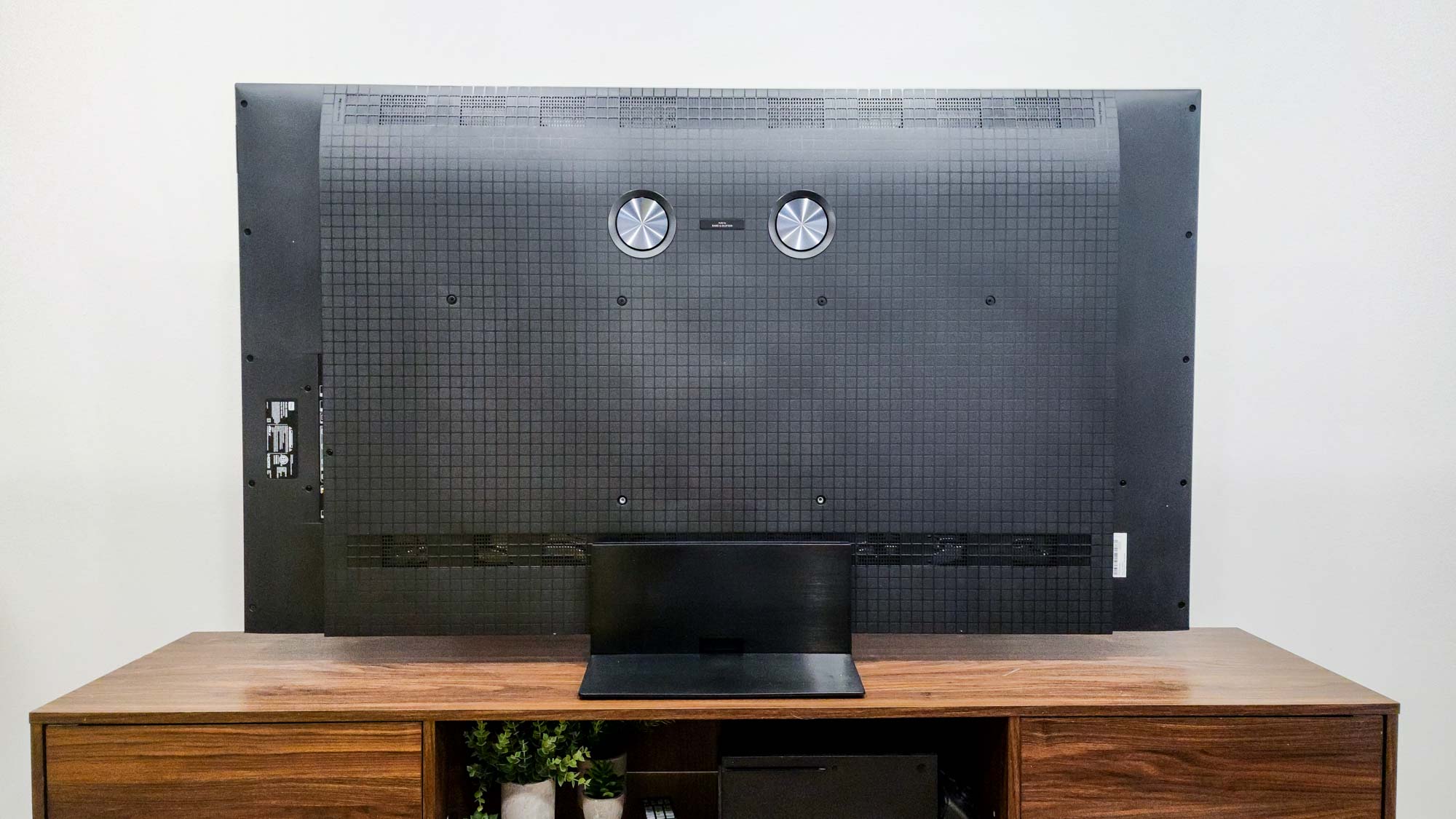
You can add the stand, which connects to the back of the TV with screws (and has a plastic cover for simplifying cable arrangement), or wall-mount the TV with a 300x300mm VESA mechanism on the rear panel.
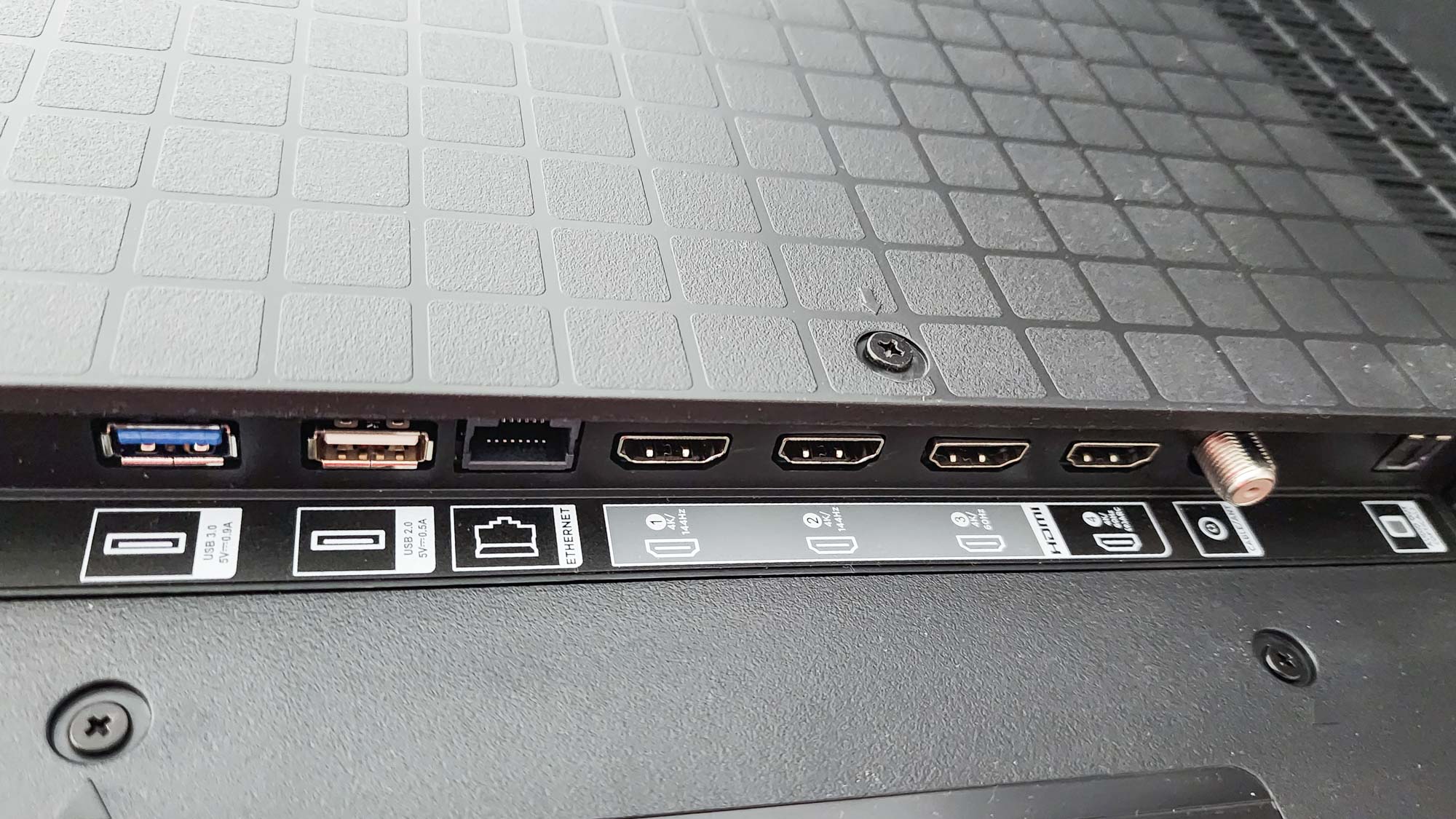
The power cable plugs into the left side of the TV. All of the other ports are on the right: two USB, Ethernet, four HDMI, coaxial cable, and S/PDIF optical audio out. Two of the HDMI ports adhere to the newer and more powerful HDMI 2.1 standard with refresh rates up to 144Hz; the other two are HDMI 2.0 ports limited to 60Hz.
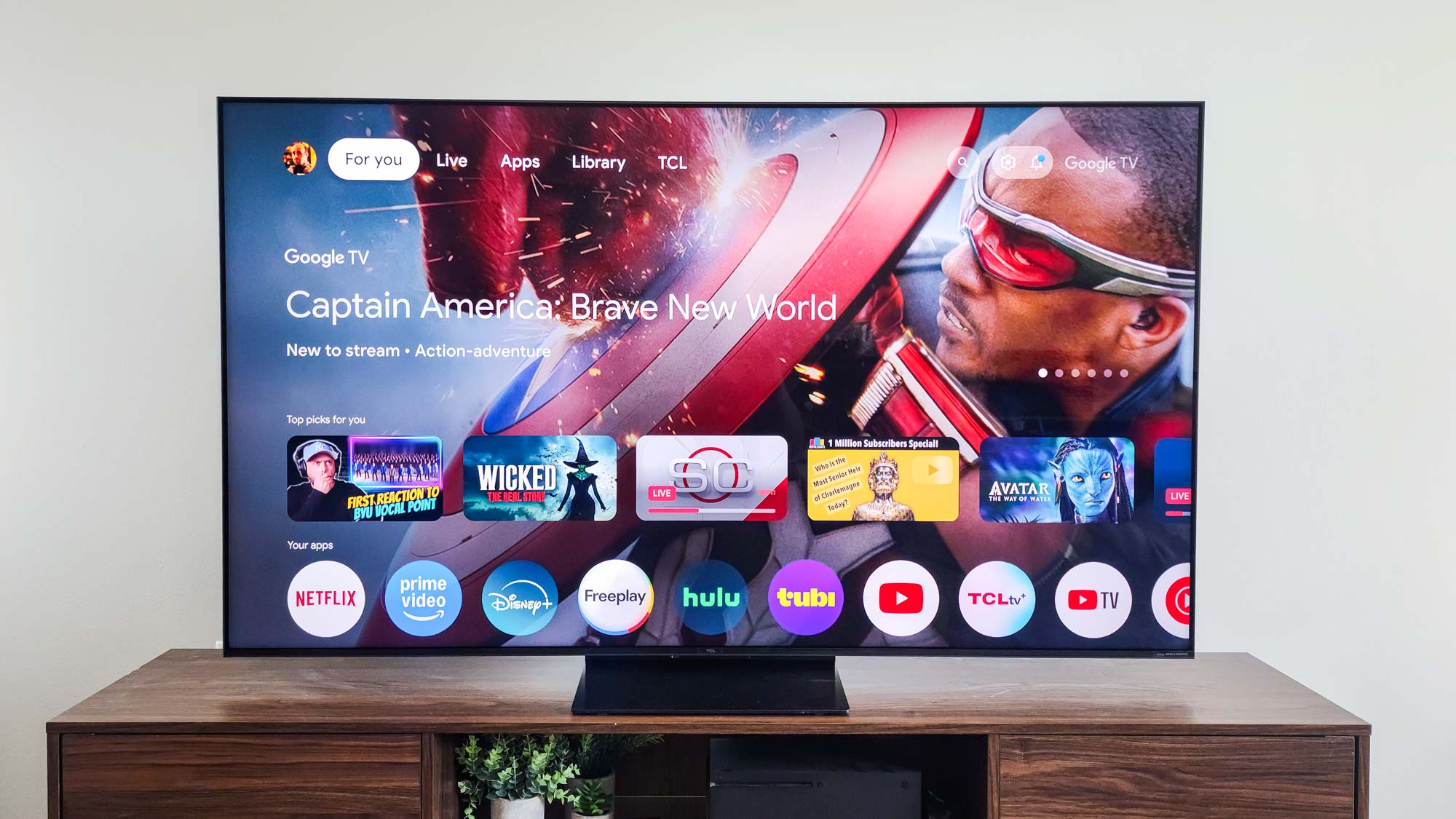
Google TV is the QM7K’s operating system, and that’s okay by me. It’s the most flexible and powerful on the market, both easy to use and connected to the sprawling Google ecosystem so search can extend from your other devices to your TV, and vice versa. You can cast to it from your mobile devices using Chromecast or Apple AirPlay 2 or watch over-the-air broadcasts via the integrated ATSC 1.0 tuner. (They won’t be 4K, though — for that, you would need ATSC 3.0, which many manufacturers have abandoned due to licensing issues.) The TV can also connect to your smart home network via Google Assistant, Amazon Alexa, or Apple HomeKit.
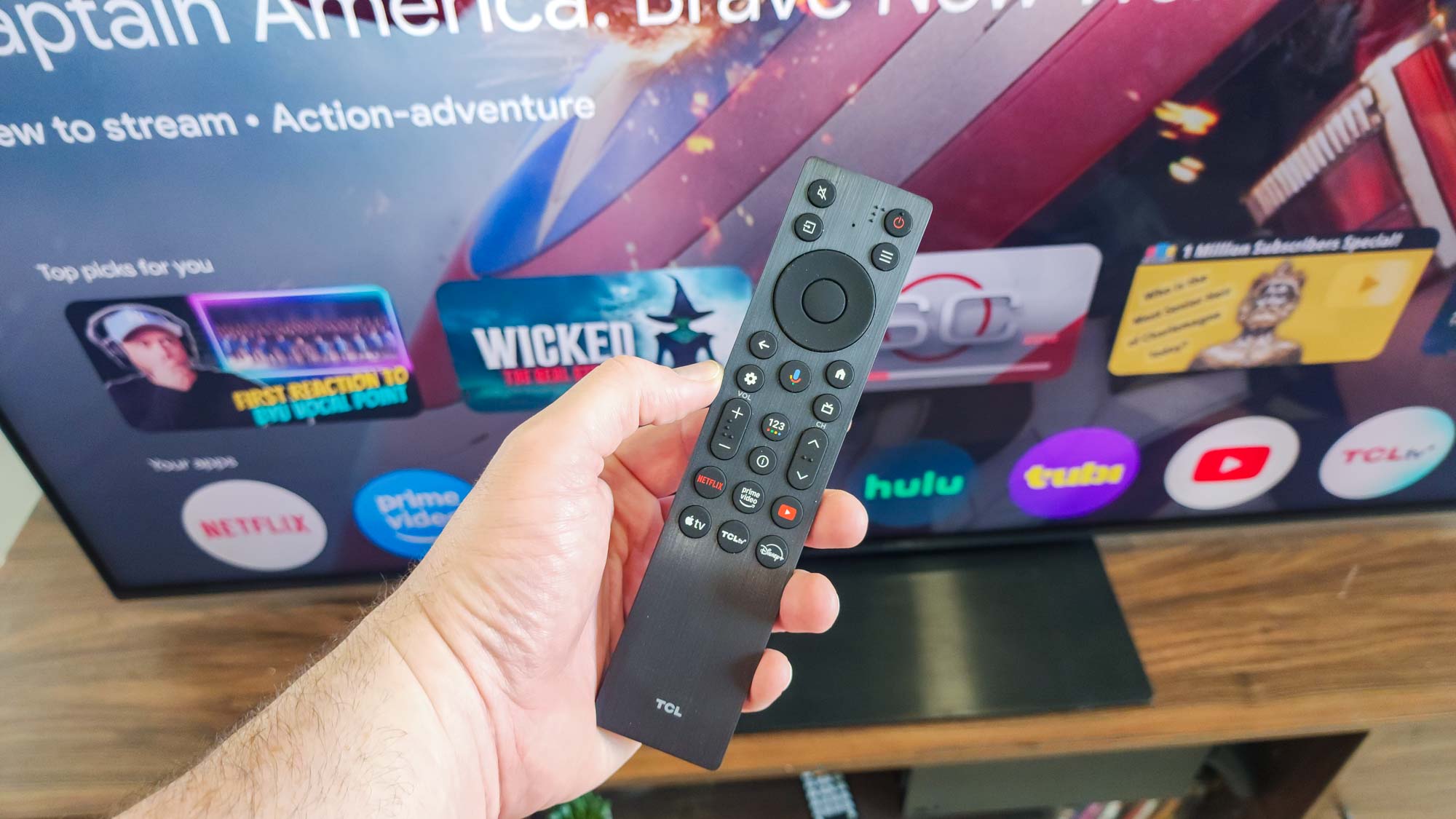
The remote is simple and lightweight. It’s black, with the appearance of brushed metal, and a tight, helpfully backlit collection of all the basic buttons. I don’t love the heavily beveled shape of the remote’s back panel, as it’s uncomfortably angular in my hand, but the design is otherwise acceptable.
TCL QM7K QD-Mini LED TV review: Performance and test results
To evaluate the QM7K in everyday conditions, I watched a number of recent movies and TV series in various genres, from action movies (“Mission: Impossible—Dead Reckoning” and “Deadpool & Wolverine”) to more vibrantly colorful live-action films (“Wicked” and “Barbie”) to animated features (“Spider-Man: Across the Spider-Verse” and “The Super Mario Bros. Movie”).
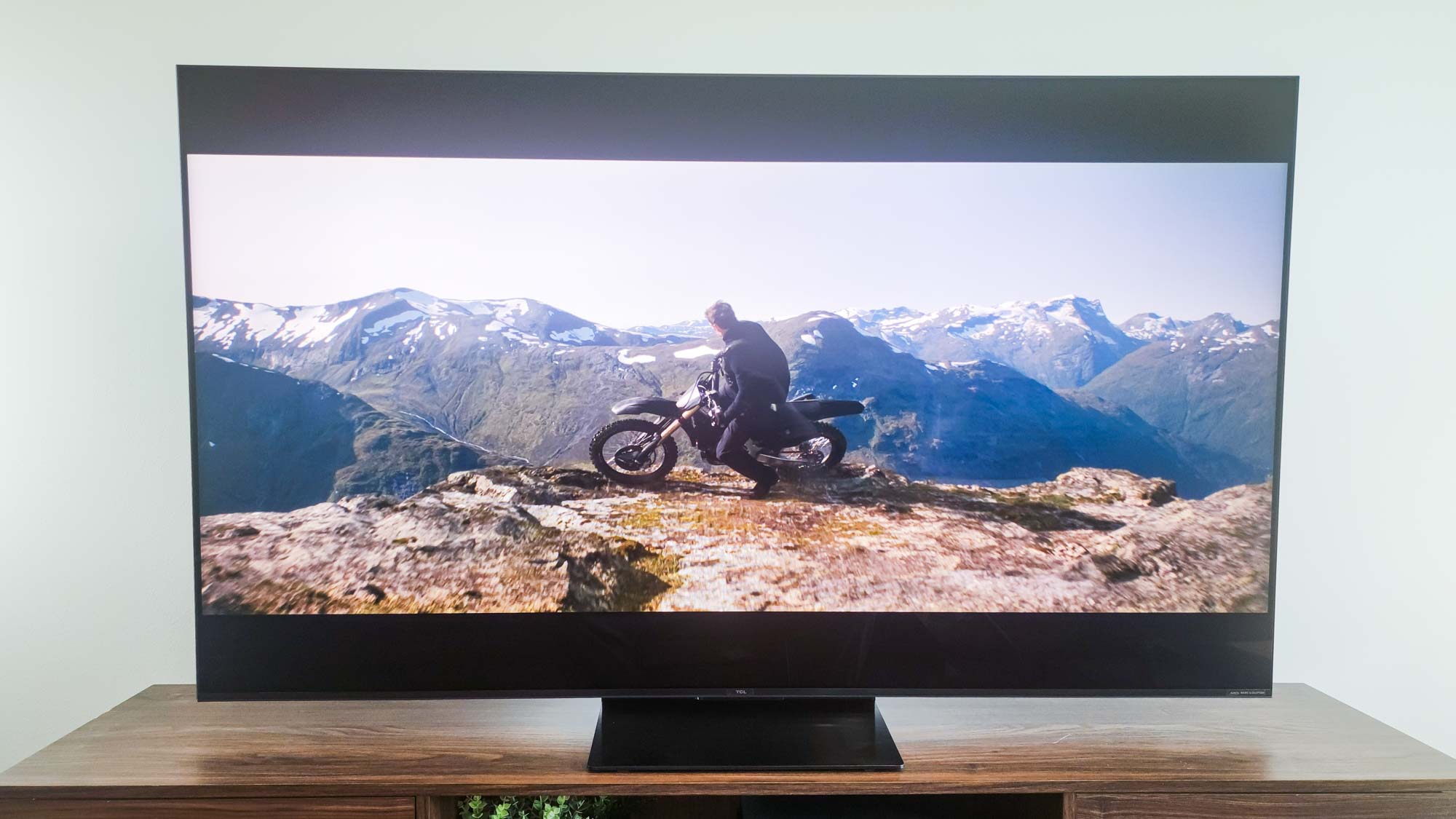
They all looked good when viewed in Filmmaker Mode (usually the most accurate out-of-the-box preset). Heavily shadowed and black-and-white scenes, of the kind that make up much of Dune: Part Two and the Oscar-winning Oppenheimer, looked crisp and detailed. Barbie and Wicked, which happily freebase pink, were attractively balanced throughout.
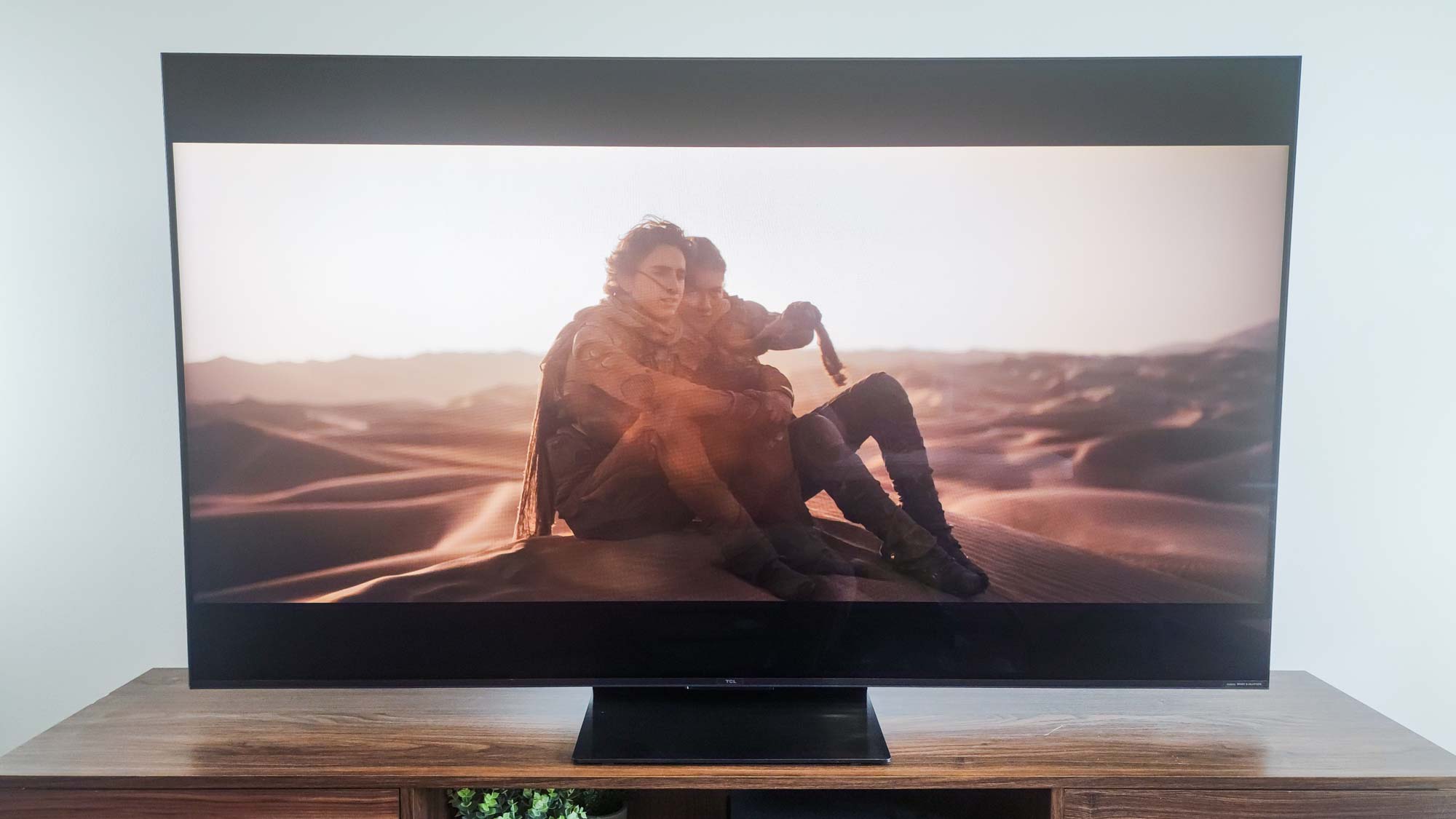
The Super Mario Bros. Movie, which trends livelier, packed exactly the right cartoony punch. But grittier realism was no problem, either, as I saw on the hit Max series The Pitt and the acclaimed new season of Andor. Stutter was at a minimum in more action-packed moments, if sometimes slightly visible, but it never deterred high-riding heroes like Ethan Hunt and Miles Morales.
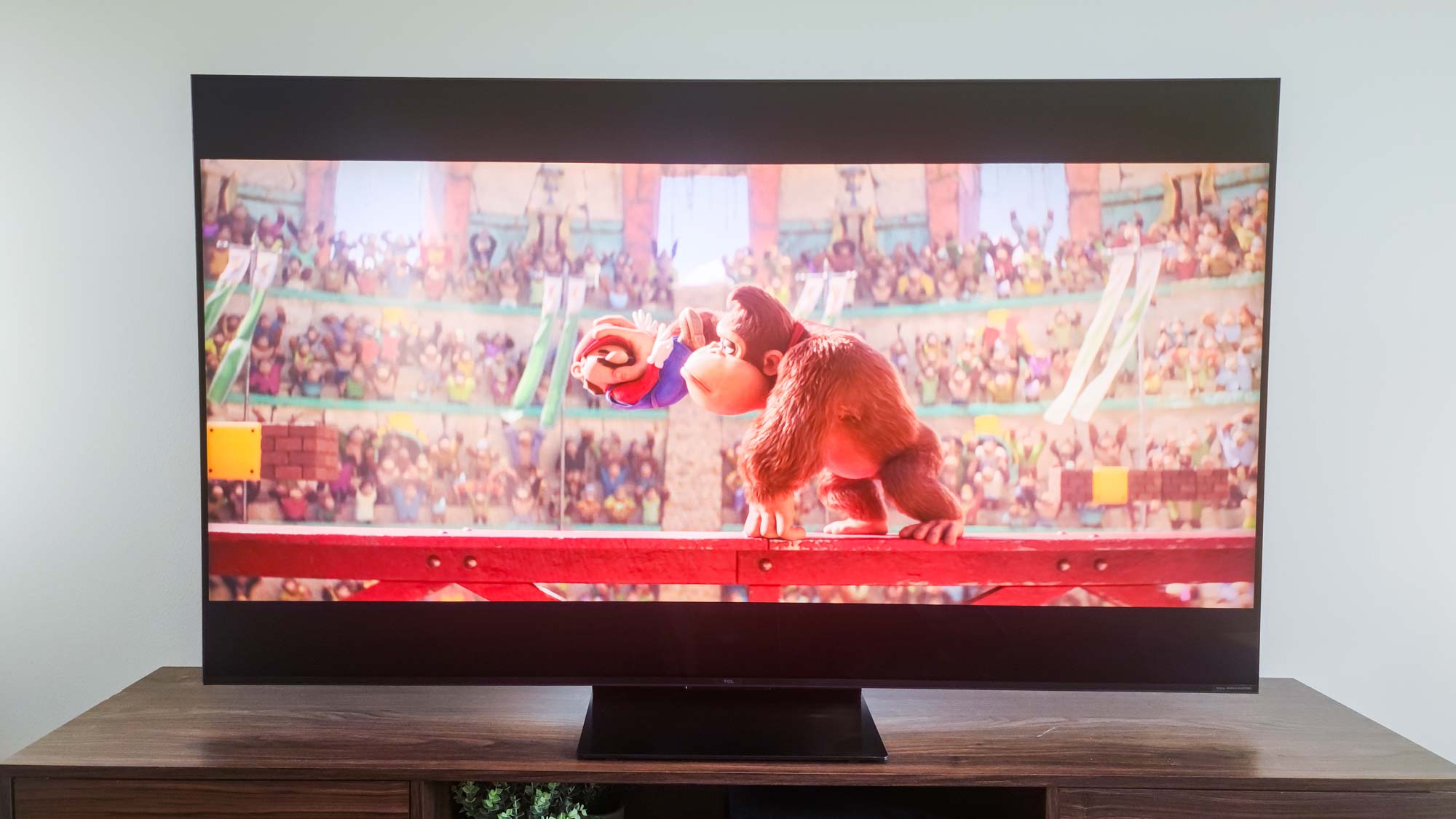
A couple of problems did crop up. The first was reflections. Though TCL touts a new “nanoscale low-reflective film” on the screen, I found its effectiveness limited in a bright or semi-bright room, especially in dark scenes. When the sun was down and I turned off all the room lights, the picture looked a lot better, with only barely visible reflections of objects directly in front of the screen and in the darkest parts of the picture.
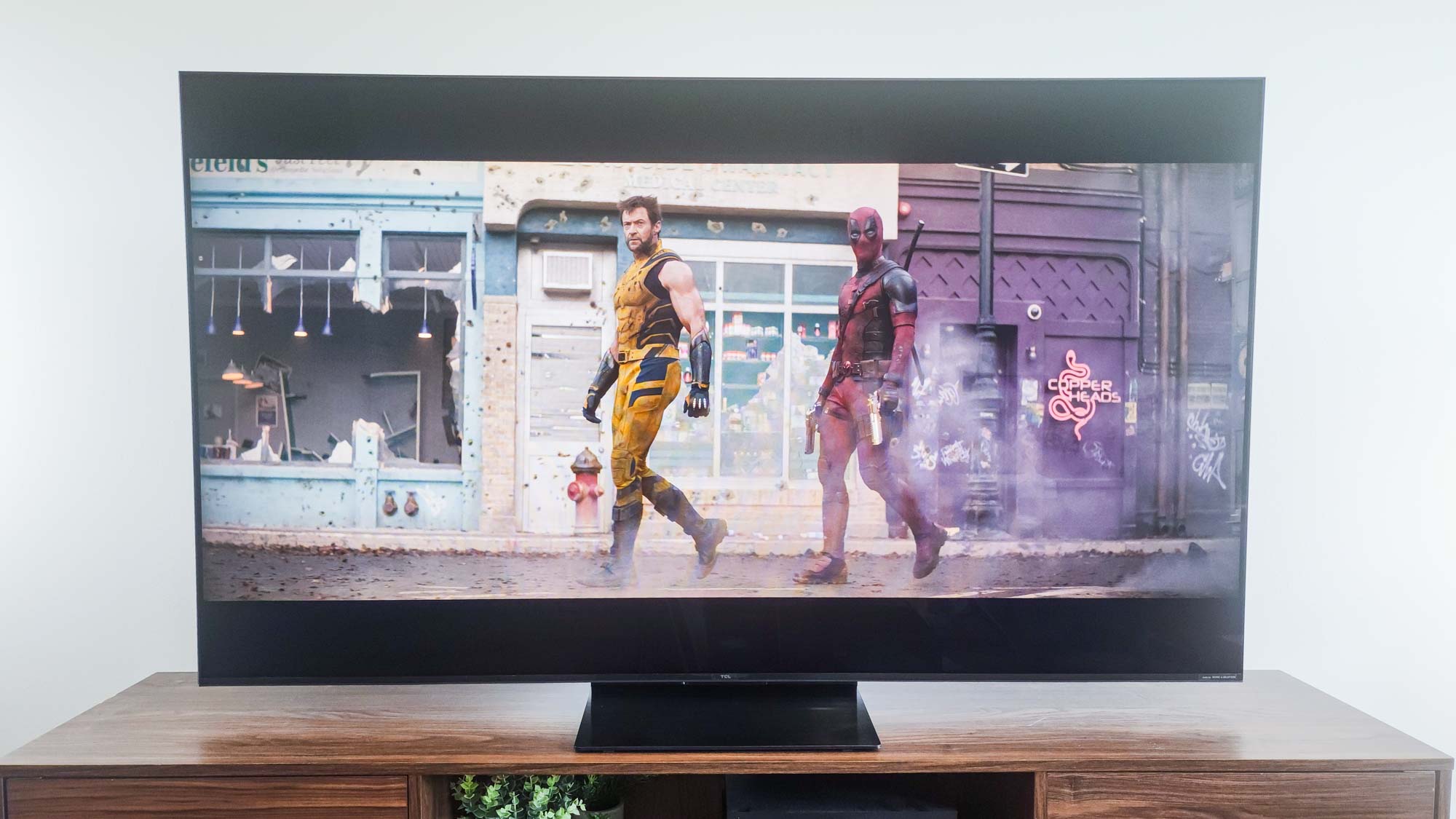
Viewing angles were a bigger issue. As good as the TV looks straight on, just a few steps away from the picture is a different story. When standing at or past the corners from almost any distance, I found the picture tainted by a distractingly dullish cast and the colors noticeably distorted. Even more than with many LED TVs, it seemed to me, the QM7K is one that’s best viewed only from straight on.
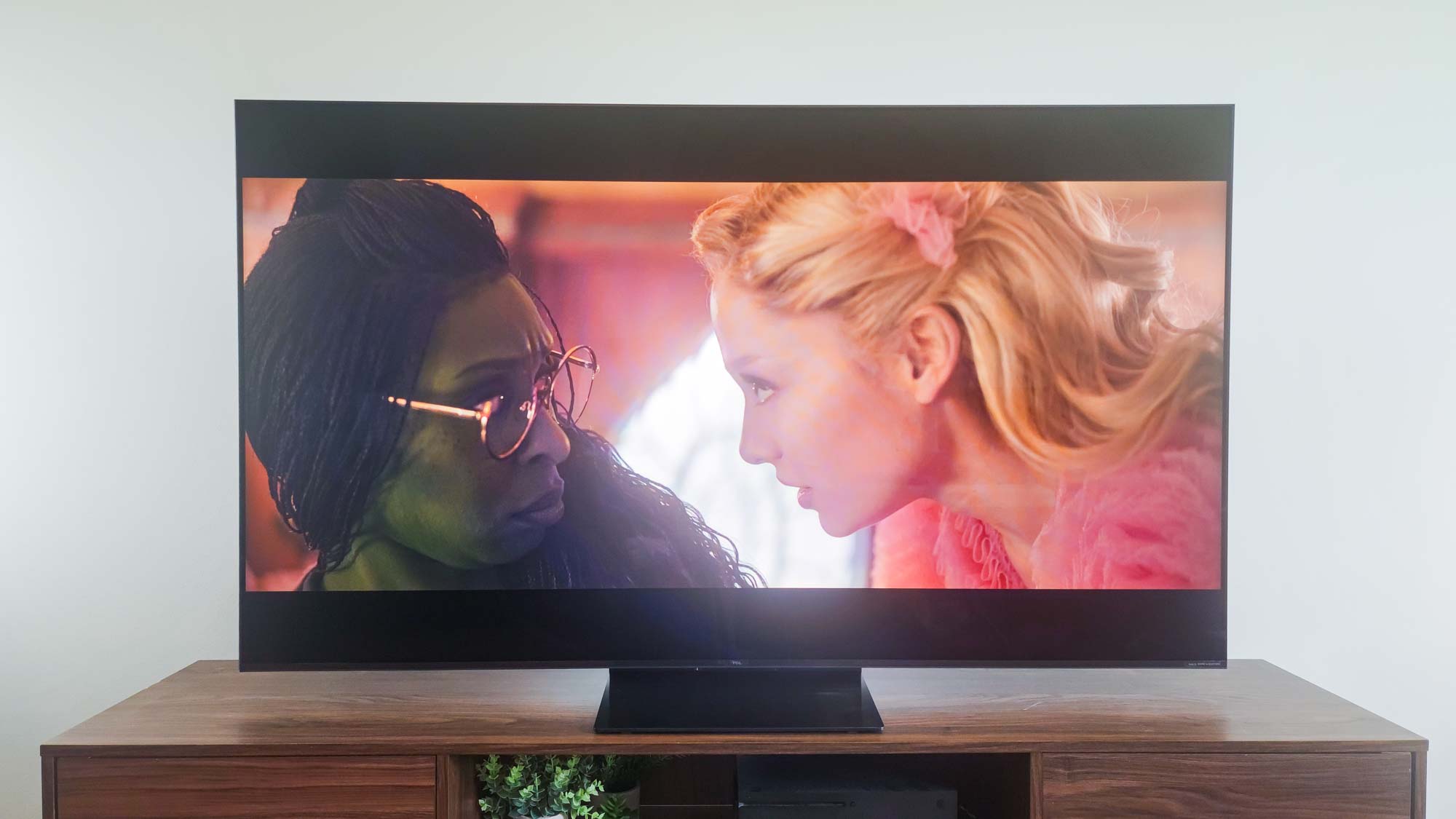
| Row 0 - Cell 0 | TCL QM7K | Hisense U8N | TCL QM6K | TCL QM7 |
SDR Brightness (10%, in nits) | 132 | 1,258 | 129 | 836 |
Delta-E (lower is better) | 1.44 | 3.24 | 2.37 | 1.95 |
Rec. 709 Gamut Coverage | 99.18 | 98.31 | 99.67 | 99.28 |
HDR Brightness (10%, in nits) | 1,734 | 3,296 | 560 | 1,732 |
UHDA-P3 Gamut Coverage | 96.98 | 96.77 | 94.71 | 97.59 |
Rec. 2020 Gamut Coverage | 79.22 | 82.07 | 71.23 | 78.62 |
Input Lag (ms) | 13.1 | 13.1 | 13.1 | 13.2 |
When running our objective tests (learn more about how we test TVs here), I measured SDR brightness of 132 nits on Filmmaker’s default settings, which is low, though its color accuracy (a Delta-E of 1.44) and Rec. 709 gamut coverage (99.17%) were much better.
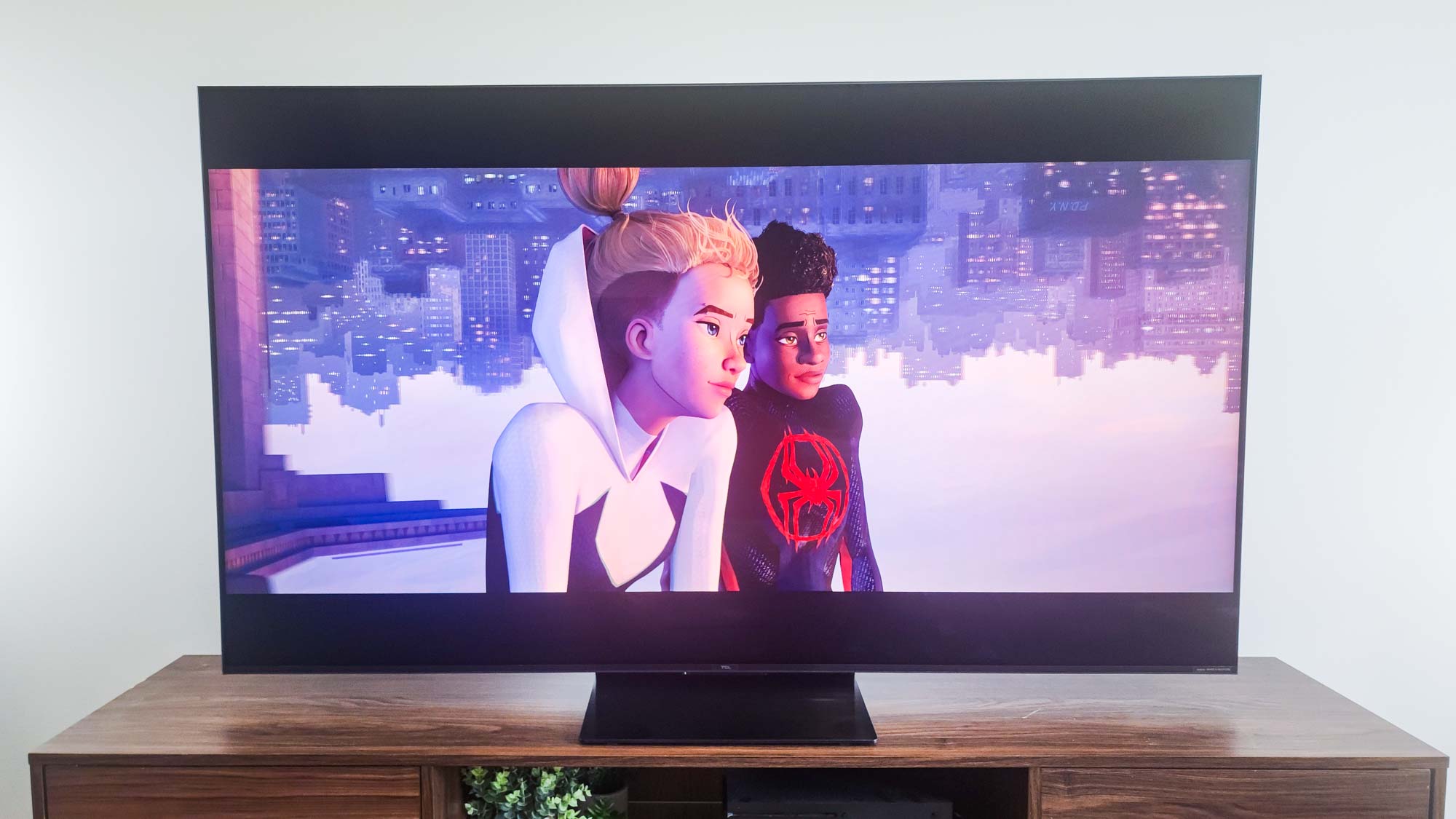
By playing around with the settings or switching to another mode, you can increase the brightness considerably. I got up past 1,600 nits in Filmmaker and 1,992 nits in Vivid — these numbers are much higher than I saw with the step-down QM6K. (Vivid also represents a big step up from the QM7’s 1,354 nits, though tweaks to the other picture modes make direct comparisons there more difficult.)
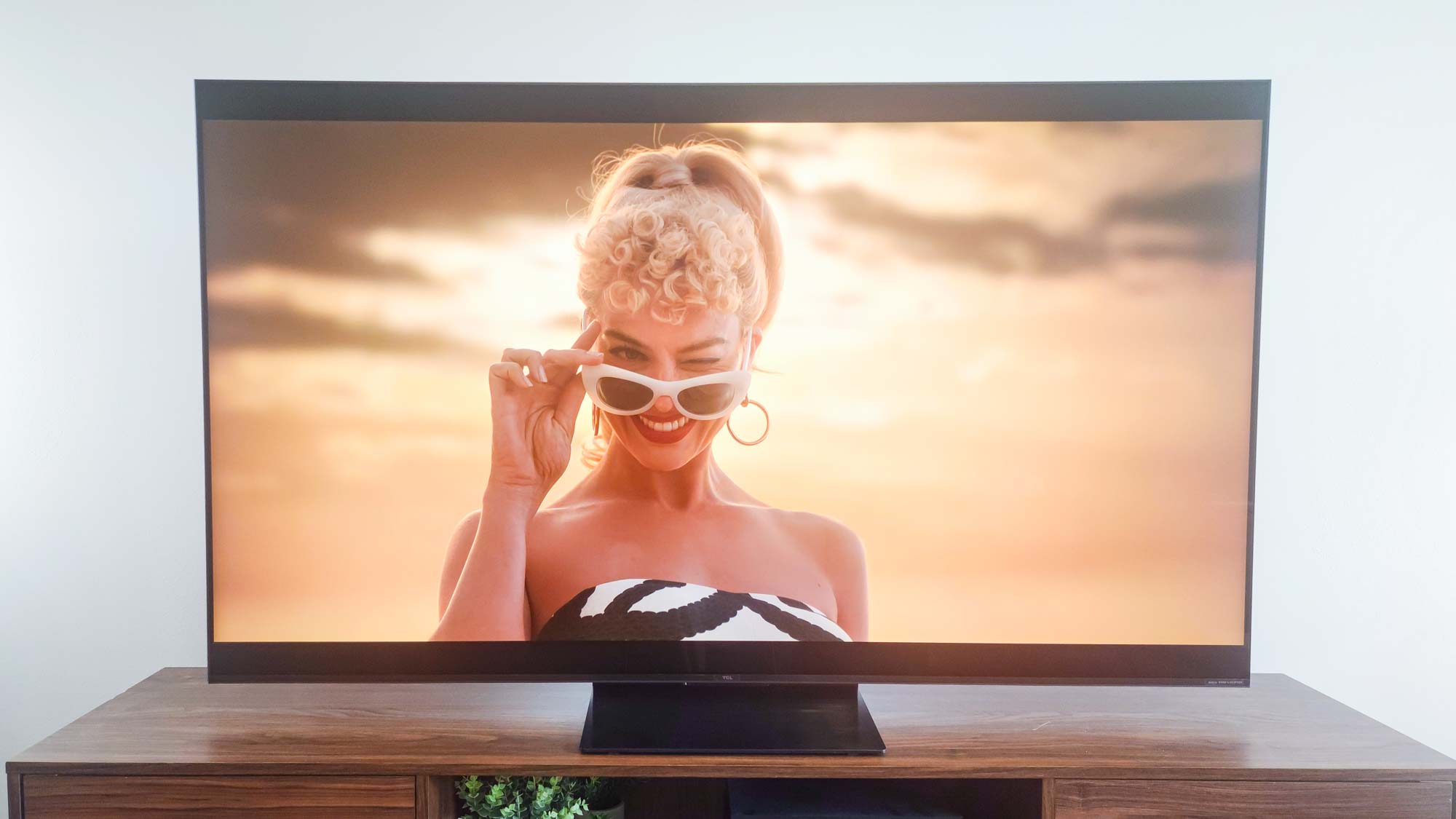
HDR is another story, with the QM7K measuring 1,734 nits of brightness again in Filmmaker Mode (and getting up as high as 2,492 nits in Vivid). This is well above the QM6K (560 nits in Filmmaker Mode), though the Hisense U8N, our favorite midrange TV in our list of the best TVs, takes brightness to still another level (3,296 nits on similar settings).
The QM7K proved sufficiently apt with HDR color, too: 96.98% coverage of the UHDA-P3 color gamut and 79.22% coverage of the wider Rec. 2020. The latter number is higher than we’ve seen with many TVs, including the recent and excellent LG C5 OLED, though the low amount of Rec. 2020 content means you can’t take great advantage of it yet — and the U8N comes in a tick above it in that area, too (with 82.07% coverage).
In terms of HDR support, the QM7K supports all four major formats: Dolby Vision, HDR10, HDR10+, and HLG.
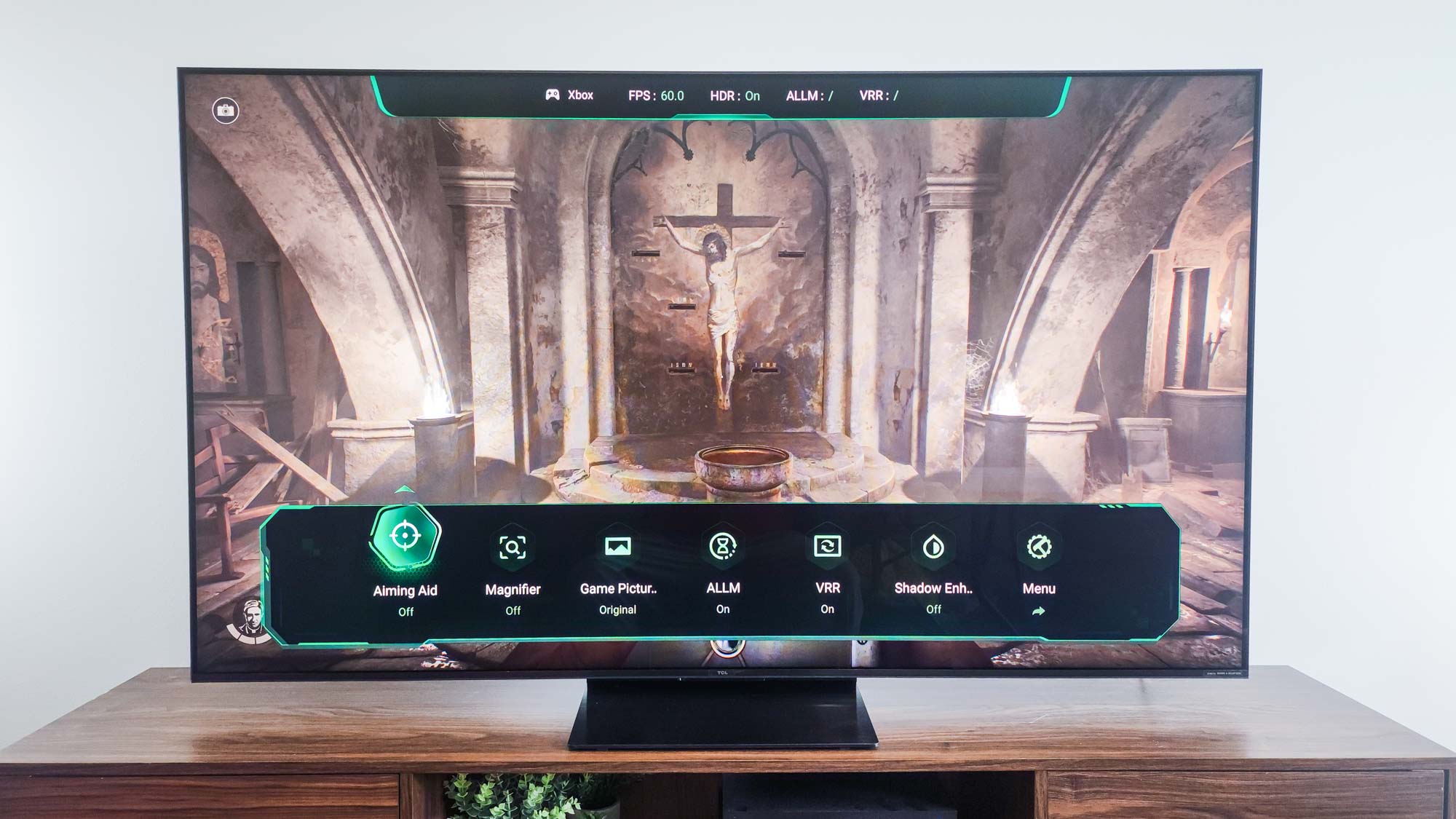
The set’s gaming performance is fine but not spectacular: With my Leo Bodnar 4K Input Lag Tester, I measured an input lag of 13.1ms — just above our 10ms threshold for outstanding gaming performance. A major feature is a pop-up, two-part game bar you can activate when “Game Master” mode is on. Like similar bars on sets from other manufacturers, this one is well loaded with information and access to useful game settings.
It’s worth mentioning, though, that the 288Hz VRR refresh rate can only kick in if you’re playing at 1080p. At 4K, it’s still 144Hz. During my testing period, Indiana Jones and the Great Circle looked good and played well.
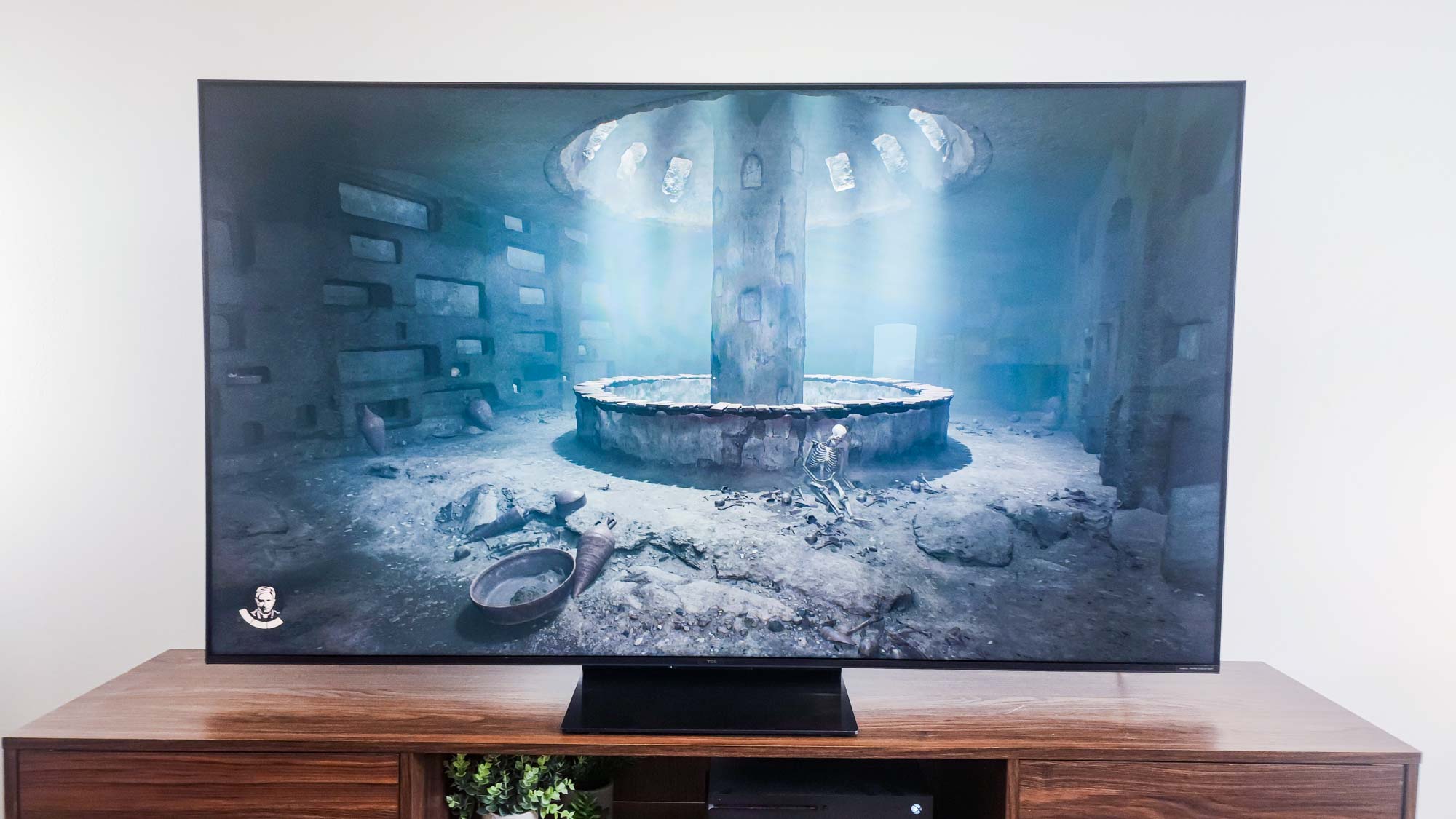
One thing I really did not love: the TV’s sound. Though the QM7K is loaded with a 40W Bang & Olufsen speaker system and supports Dolby Atmos, it never gets very loud (I routinely had to have the volume around 50 just to hear what was happening). I also noticed a distinct lack of bass response (as I heard when playing The Knife’s “Silent Shout”) and shrill high trebles.
I got used to the audio eventually, but I’d recommend pairing the TV with one of the best soundbars so you can avoid its built-in speakers altogether.
TCL QM7K QD-Mini LED TV review: Verdict
The TCL QM7K is an affordable TV you can count on, especially when it’s on sale. For less than $1,200, it gets a lot right, starting with the most important picture factors in its brightness and color, and its additional pluses — operating system, remote, superior picture processing — give it a fighting chance against the less expensive and brighter Hisense U8N.
Even if it doesn’t get you everything a higher-end set might, it gets you a lot — and you won’t have to break the bank for the privilege.
Matthew Murray is the head of testing for Future, coordinating and conducting product testing at Tom’s Guide and other Future publications. He has previously covered technology and performance arts for multiple publications, edited numerous books, and worked as a theatre critic for more than 16 years.
You must confirm your public display name before commenting
Please logout and then login again, you will then be prompted to enter your display name.
